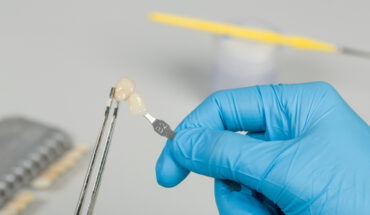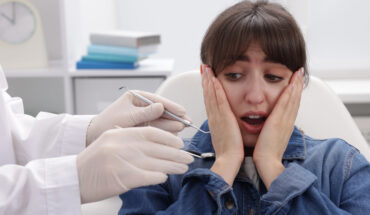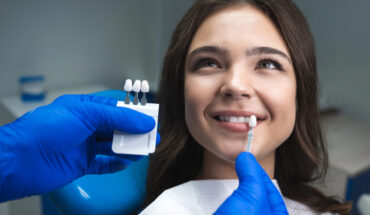
Recovering and working with DNA is challenging enough. Having material that’s tens, or hundreds of thousands of years old makes archaeologists invisibly rejoining shards and shatterings of ancient pots look like simple paint-by-numbers.
Painstakingly piecing together broken fragments of antediluvian genomes in order to compile a picture of the past is the art of the archaeogeneticist and palaeomicrobiologist. To study and identify long-dead, preserved bacterial communities in archaeological dental calculus, researchers had to develop innovative tools and novel computational approaches to genetically analyse billions of DNA fragments. These specifically designed tools allowed researchers to reconstruct the 100,000-year-old oral microbiome of a Neanderthal from Pešturina Cave in Serbia, who offered 21st century mankind the oldest oral microbiome by more than 50,000 years.
The tools and techniques developed for this study open new opportunities to answer fundamental questions and allow the broader exploration of the ever-revealingly important relationship between a human and their microbiome.
We brush every day to remove bacterial plaques that grow on our teeth and they hold remarkable clues not only to our health, but also to our evolution.
Researchers were able to identify ten groups of bacteria within the fossilised dental plaque that have been present in primate oral microbiome for over 40 million years. Many of these bacteria are known to be beneficial in the promotion of healthy gums and teeth, and we still share this microbial archaeology with the orangutan, chimpanzee and bonobo. Surprisingly, a number of these bacteria are so understudied they lack species names.
However, one of the biggest surprises was the discovery that bacteria present in both modern humans and Neanderthals, a subgroup of Streptococcus, appears to have specifically adapted to manage starch consumption in early Homo evolution. This suggests that starchy foods became important in the human diet long before the introduction of farming: in fact even before the evolution of modern humans. Roots, tubers, and seeds are starchy foods and therefore a rich sources of energy. Previous studies argue that a starchy foods dietary transition may have assisted the large brain growth that characterises our species.
Christina Warinner, lead senior author of the study and joint-appointment professor at Harvard University and the Max Piank Institute for the Science of Human History in Anthropology and Microbiome Sciences, said, “Reconstructing what was on the menu for our most ancient ancestors is a difficult challenge, but our oral bacteria may hold important clues for understanding the early dietary shifts that have made us uniquely human,” said “Bacterial genomes evolve much more quickly than the human genome, making our microbiome a particularly sensitive indicator of major events in our distant and recent evolutionary past.”
Although we share many oral bacteria with other primates, the oral microbiomes of humans and Neanderthals are very similar albeit with a few small differences at the bacterial strain level. These differences established for researches that ancient humans living in Ice Age Europe shared some bacterial strains with Neanderthals. Oral microbiome is typically acquired in early childhood from caregivers, and these shared strains may reflect earlier human-Neanderthal pairings and child rearing than previously considered. There has already been this indication by the discovery of Neanderthal DNA in ancient and modern human genomes.
Dentists from New York to Enoggera are acutely aware that the oral cavity has the second largest, and second most diverse microbiota after the gut. It harbors over 700 species of bacteria. It nurtures microorganisms of bacteria, fungi, viruses and protozoa. The mouth is an exceptionally complex habitat where microbes colonise, whether it be on the hard surfaces of the teeth or the soft tissues of the oral mucosa. As well as initiating digestion, oral microbiome is crucial in maintaining oral and systemic health.
Modern dental hygiene would have been quite unnecessary for ancient Romans of Pompeii with research revealing they had impressively healthy teeth.
A symbiotic relationship exists between all the microorganisms in our mouth. The commensal populations do not cause harm, and they maintain a check on the pathogenic species by not allowing them to adhere to the mucosa. Bacteria causes infection and disease only after that barrier of the commensals has been breached.
Microbial communities of the human body play a critical role in physiological, metabolic and immunological functions: digestion, nutrition, energy, differentiation and maturation of the host mucosa and its immune system. Control of fat storage and metabolic regulation. Processing and detoxification of environmental chemicals. Barrier function of skin and mucosa, maintenance of the immune system and the balance between pro-inflammatory and anti-inflammatory processes. promoting microorganisms (colonization resistance) and prevention of invasion and growth of disease
Studying the microbiome was previously limited to conventional culture-dependent techniques, but an abundance of oral microflora could not be cultured. The emergence of new genomic technologies. including next-generation sequencing and bioinformatics, is revealing the complexities of oral microbiome. It provides a powerful means to understanding its specifics in health and disease, and further exploration into the functional and metabolic alterations associated with diseased states. The ability to identify molecular signatures for drug development and targeted therapies ultimately provides precision, personalised medication and therapies.
“The intersection of human and microbial evolutionary biology is fascinating. Oral bacteria provide an unexpected opportunity for reconstructing the interactions of humans and Neanderthals tens of thousands of years ago,” said Irina Velsko, coauthor and postdoctoral researcher, also at the MPI-SHH on the study.
Data from oral microbiology research shows that commensal microflora can be switched to opportunistic pathogenic flora through complex environmental change driven by the host, rather than the bacteria. Archeological evidence of calcified dental plaque shows marked shifts in oral microbiome toward disease-associated microbiome and cariogenic bacteria becoming dominant during the Industrial Revolution.
Modern oral microbiota are significantly less diverse than historic populations. Cavities, for example, are now endemic, affecting 60-90% of schoolchildren in industrialised countries. In contrast, tooth decay and periodontal disease were rare in pre-Neolithic and early hominins. The need for all-on-4 dental implants is another example of dental health in crisis, where a whole set of teeth is permanently replaced; four titanium implants support the fixed prosthesis, which consists of between ten and fourteen teeth.
Ancient Greeks and Romans imported sugar, known as sakcharon – as a medicine, not a food. In 14th and 15th century England, sugar was as expensive as Asian imported spices like nutmeg, ginger and pepper. Within 300 years it became immensely popular and British consumption quintupled between 1710 and 1770. For almost one hundred years, sugar was Britains most expensive import.
The Industrial Revolution brought many changes, and may also be the marker where removal of the wisdom teeth is almost a rite of passage for young adults today. Dental anthropologists and evolutionary biologists have spent 30 years studying the teeth of living and fossilised human remains, as well as countless other species. The current dental issues of humans is not normal; certainly in consideration that other vertebrate creatures do not display the same dental problems we do. Rarely are their teeth crooked and nor do they have cavities. Our ancient remains tell us that our ancestors did not have impacted wisdom teeth, and few appear to have had gum disease.
Indeed, the teeth of modern-day humans are a profound contradiction. They are the hardest parts of our body yet are incredibly fragile. Although teeth endure for millions of years in fossil records, ours now cannot seem to last the lifetime of our mouth. Teeth gave our ancestors dominance over the organic world, yet today ours require special daily care to be maintained and this contradiction is largely limited to industrial-age, contemporary populations. It is best explained by a mismatch between today’s diets and those for which our teeth and jaws evolved. Paleontologists have long understood that our teeth are deeply rooted in the history of evolution. With incredible advances in instrument design and technology, clinical researchers and dental practitioners are in the enviable position of further and broader exploration into oral microbiome and its most necessary components for excellent systemic health and balance.




